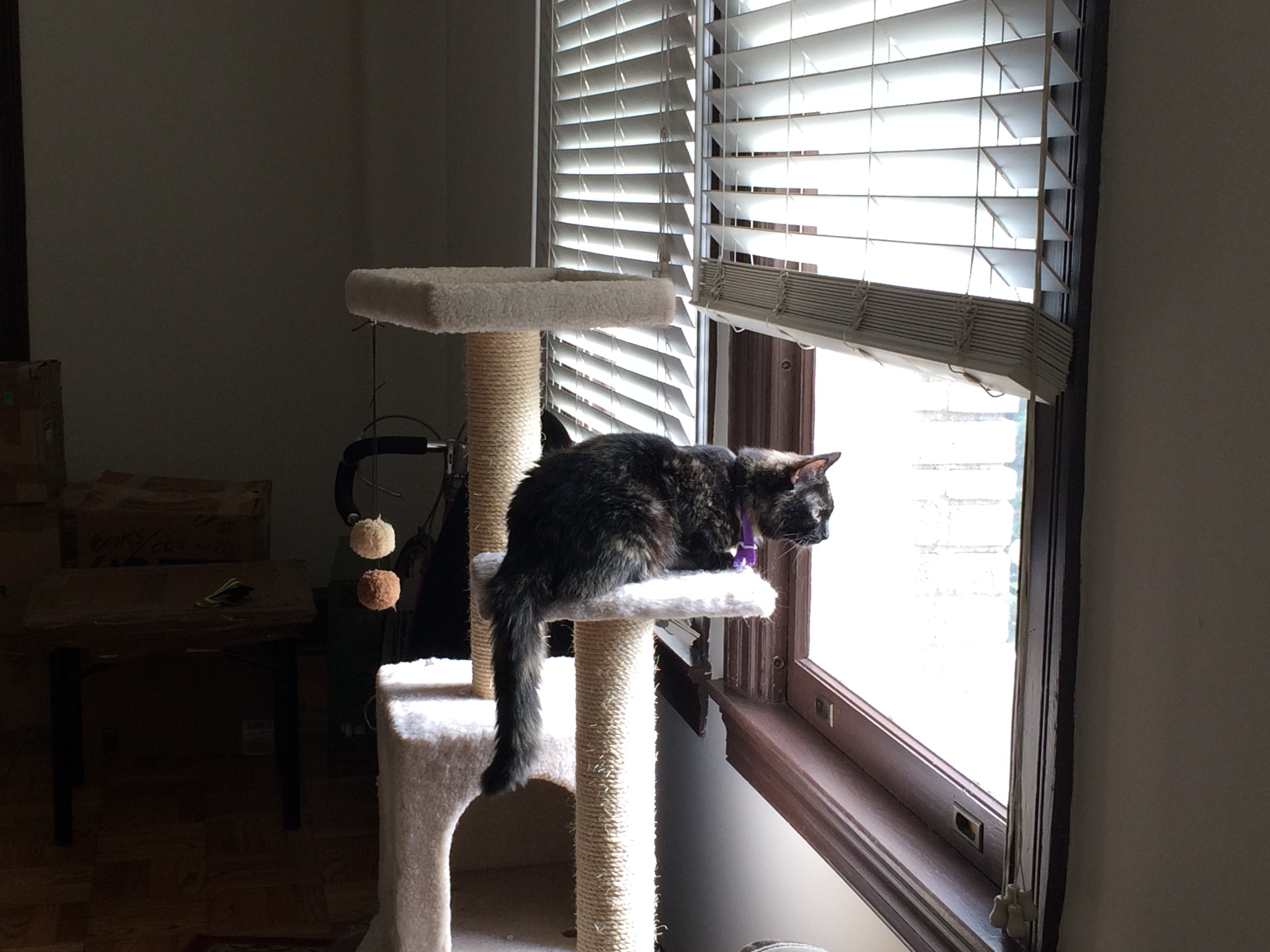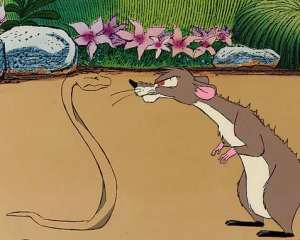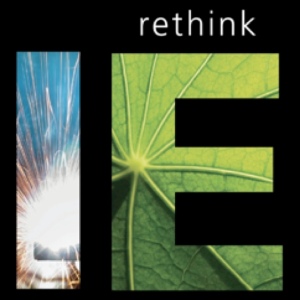Back to School
The Labor Day holiday weekend is drawing to a close, and I have finished up my second week of the Fellowship. Even though the start dates of the semester and my tenure here in DC were the same, I have gotten to notice how much the routines differ between the two environments. Unlike my academic routine that can adapt and adjust based on the day of the week and the differences between class and no-class, committee and research schedules, things feel distinct here. There is a bus I catch, most days, between 8:14 and 8:40. On Wednesdays, there will usually be lunch with the other Fellows. There are Monday and Thursday morning “huddle” meetings.
However, that is not what I notice the most from the past two weeks. I admit that I have developed a particular appreciation for my manager. Each day, there is a specific new thing I have to learn. How do I send a particular type of email? What is the formatting for this kind of documentation? Who do I contact for this activity? Of course, he’s seen this all before, but it’s my first time. And it’s not like I have had 3-4 weeks of easing into the situation. I’ve already worked on international memoranda, and meetings between embassy staff and local representatives, and sat in on planning discussions with the offices of some folks whose name might appear on someone’s bumper sticker. (But notably, the importance of the office is communicated by an acronym, or even a single letter; the people whose names are used are names I don’t recognize, and even those names go with acronyms.) The most appropriate phrase for this experience is one that I learned during my first few weeks as an undergrad at MIT: “Drinking from the firehose.”
In that environment, where I’m supposed to come up to speed quickly, it seems like a luxury to have someone check in with me as many as 3-5 times per day to help me with one task or another. In truth, some of the help sessions seem a bit remedial, teaching me things I do already know. But he doesn’t know that. And more importantly, I don’t always know when something I think I know how to do isn’t exactly how this organization does it. So, I find myself learning to be more patient when being taught, and listening all the way through the lesson. I even have a guiding document for goals to achieve over the next month or so—distinct from a to-do list of tasks, and an in-process list of assignments.
One of the things that surprises me most about this firehose experience is a new-found empathy and appreciation for the situations that confront new students in the lab. We’ve been working on SoS and PoSE conceptualizations of ICT use in the SHARK and DOLPHIN and PERCH* streams for years—why are you nodding blankly at me? Of course. I’ve been doing it for years. You just got here. I just used a bunch of acronyms—shorthand for me, incomprehensible jargon for you. Even when we get to time for a thesis outline, or a prelim draft, or a set of PhD defense slides, it does take some reminders to recognize that two dozen years of practice and 75 or more iterations don’t get transmitted easily to someone who is experiencing it all new and in an intense, nervous state.
I would like to hope that this lesson comes back to Purdue with me next Fall. For a new student, or new faculty member, each new item can be part of an overwhelming onslaught of novelty and complexity. Maybe it won’t stay that way for long, but it feels like that now. In the senior capstone design course I teach, I remind the students to take the time to capture those initial moments of novelty and first attempts at processing and decision making, because it will be really hard to recall those feelings (and assumptions, and senses of confusion) again later. I can tell them that, but it was a long time since I have felt that at the level I feel it now. It’s good to be reminded of what the first few, chaotic weeks of new experience feel like.

Photo of Little Kern Golden Trout by Middleton and Liitschwager (1988), hanging in the C Street entrance lobby of the National Academies.
*Acronym decluttering:
SoS: Systems-of-Systems. or a description of complex systems engineering settings where individual components of an overarching system represent complex systems in their own right (such as individual aircraft, with pilots and co-pilots, in the airspace over Washington, DC while Marine One is traveling across town).
PoSE: Perspectives on Systems Engineering. This is a course that I developed to teach about four distinct traditions of systems engineering, ranging across systems thinking, cybernetics, component-whole relations, and project management. Only in its second iteration as a hybrid distance / on-campus course, it is one of the most subscribed courses in Engineering Professional Education (and I’m not even teaching it this semester).
ICT: Information and Communications Technology. When I first started as a faculty member, most computers had line-by-line display screens in single colors of amber or green; email and word processors and bulletin board chat groups were the most sophisticated information exchange tools available. Even with all of the changes in capability, it’s still important to recognize that the point of these technologies were, and are, for humans to communicate.
SHARK, DOLPHIN, PERCH: These are designations of project areas within the research lab, referring to knowledge sharing architectures, information flow delays, and applications to healthcare delivery improvement, respectively. Check them out at https://engineering.purdue.edu/GrouperLab/streams/.






December 30, 2023
Priority Push Notifications
“New notification available. Open?”
Engaging in family connection and conversation on the Saturday morning between Christmas and New Years, it is easy to lose some track of the general passage of time. Discussions of gameplay and gender dynamics, considerations of varieties of microbreweries and their recent offerings, as the hours pass and wake-up times become more of a suggestion than a workday requirement. So, it was really a bit of a surprise to notice that my weather app was trying to give me a bit of new information about the meteorological world.
“100 days until the eclipse!”
Urp. That is a bit of an alert about what is waiting for me next week when I return to work mode. All remaining conceits of “but that is so far away… it isn’t even this year” drop away as the calendar shifts over to January, 2024. The local business community news outlets are starting to highlight the upcoming events and tourist projections. For Indiana, the Total Solar Eclipse (TSE) could be a really big deal. If the community is ready. If the planning continues to make progress. If the weather is good. If we coordinate the media center activities. If the invitees actually are available and show up.
How much of that is within any one individual’s control, or scope? I will confess to having had a long history of feeling a strong sense of responsibility to make everything work, to keep track of and use my own force of will to bring the best imagined scenario into being. Much to my surprise (and potential relief), the experience of the TSE planning is starting to take me away from that stance. Make no mistake; I am feeling the “terribly, terribly aware” intensity of ensuring that the invitation letters are sent and the corporate executives are informed, in “BLUF” terminology and 10-second sound bites, why they need to commit resources and time and self to this thing as this priority, now.
However, I also remember a very valuable lesson from the last statewide preparation event for which I felt an important obligation as Indiana Space Grant Consortium (INSGC) Director, the Apollo 11 50th Anniversary event back in July 2019. Lots of people wanted to celebrate this historic event in their own way, in their own place, with the resources and connections that were meaningful for them. The TSE is a bit more localized and focused – not every community in Indiana will experience totality, but the communities with which INSGC and I are engaged literally span the state from southwest to northeast. We can help out a lot regarding eclipse viewing safety and the timing and direction of where to look… but otherwise, it’s kind of like putting together a really huge potluck picnic. In some ways, it feels like the planners of the National Road Garage / Yard Sale, spanning hundreds of miles of old U.S. 40. We know the date. We know the locations. (Oh, if you’re interested, the 2024 dates for the National Road Sale are May 29 – June 2.). But what’s for sale? Which bands will be playing, where? What’s going to be on the menu? I don’t really know all of what people will be bringing, and the more I try to control that part, the less enthusiasm there will be. We just welcome as many people to participate in as many ways as engages their excitement and interest to tell a very special story about a very special experience.
Perhaps it is a good thing that I take a few more quiet days here at the end of the calendar year. I appreciate the rest and the restoration that will help me prepare for the coming weeks. The long-term advanced planning is very much coming to an end. As is often said, it’s go time. Lay out the viewing location access paths and traffic flow plans. Test the equipment. Confirm the portable cellular and toilet orders. (No. Really. Do it this coming week.). Have you got safety videos? School release information? General public notices? In several languages? In accessible formats? What about…
Ah, yes. Use the rest while it’s available. Take advantage of the holiday weekend. Celebrate safely, everyone. Happy New Year. I hope to see some of you at the Indianapolis Motor Speedway for the TSE viewing, and you enjoying your souvenir pair of “The Greatest Spectacles”. I will be there in spirit in Evansville, and Terre Haute, and Bloomington, and Jasper, and Lebanon, and Brownsburg, and Muncie, and Winchester, and all the other places along the path. Bring your friends. Take lots of pictures. Remember the day, because it will be something to be shared and recalled and stories to be told. “Hey, back in ’24? What did you do for the Eclipse? Was it special for you, too?”
Share this: